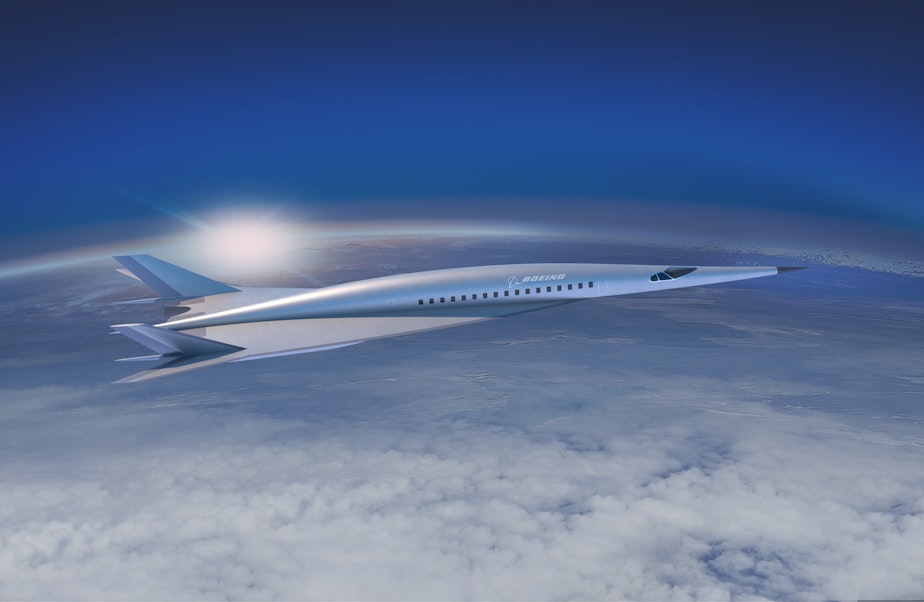Fly to Asia in three hours, but at what cost to the environment?

New high-speed passenger planes being designed by Boeing and other manufacturers could connect continents faster than ever before.
But these supersonic and “hypersonic” planes could also wreck the global climate faster than other means of travel.
Three startup companies – Aerion, Boom and Spike – have unveiled plans for supersonic planes that could fly at more than double the speed of sound.
Boeing has been touting its concept for an even faster, hypersonic plane that could fly at five times the speed of sound — some 3,600 miles per hour.
“Faster than a speeding bullet,” Boeing hypersonics engineer Kevin Bowcutt said in a Boeing promotional video.
“For anyone who's traveled across the ocean, it takes 6, 12, 14 hours,” Bowcutt said while holding a small model of a hypersonic plane. “This'll get us there in two to three hours, shortening the trip to the point where you could literally go to Europe or Asia back and forth in a day.”
Crossing an ocean in the time it takes to watch a movie could have undeniable consumer appeal, but there are some big catches.
“These supersonic aircraft will burn five to seven times more fuel than standard aircraft that are flying today,” said Anastasia Kharina, an aerospace engineer with the International Council on Clean Transportation.
Kharina said “the physics dictates” that hypersonic planes would be even worse fuel hogs than the slower supersonics.
“Speed kills fuel efficiency,” Kharina said.
For now, the hypersonic jet is a “concept plane” that could take 20 years or more of engineering work to realize. Aviation is already one of the fastest-growing threats to the climate, on pace to triple its carbon dioxide emissions by mid-century.
Supersonic planes are banned in the United States and Europe because of their deafening sonic booms. And both supersonic and hypersonic planes’ heavy demand for jet fuel could keep them grounded, economically and politically.
Many businesses, governments and scientists are aiming to eliminate carbon emissions by mid-century, around the time a hypersonic plane might get off the ground.
The more fuel is burned, the more the climate suffers, even for plant-based biofuels that many in the industry point to as a climate-friendly replacement for petroleum-based jet fuel.
Biofuels under development could reduce, but not eliminate, the climate impact of flight and are far from being commercially viable. They are not expected to meet more than a small fraction of airlines’ ballooning demands for fuel for decades.
“Climate change is a number-one priority that the world is trying to solve, and reviving supersonic is going the opposite way of that,” Kharina said.
In an emailed response to a KUOW interview request, Boeing spokesperson Brianna Jackson said technology will improve a lot by the time a hypersonic plane hits any runways and the company will make ambitious efforts to reduce its impacts.
“There are economic and environmental barriers that will need to be solved before a viable supersonic/hypersonic transport would be possible,” Jackson wrote.
“We recognize that any airplane will be expected to meet environmental standards.”

